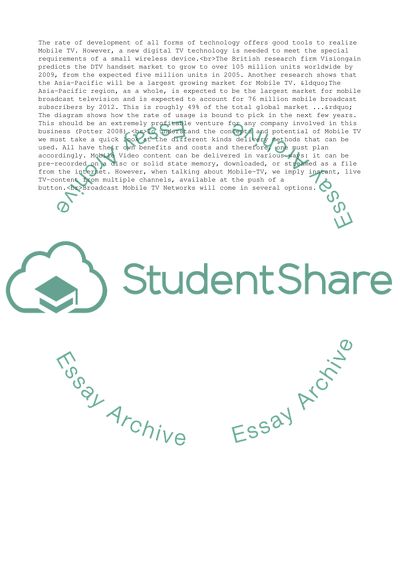Cite this document
(The Concept of Mobile TV Assignment Example | Topics and Well Written Essays - 2250 words, n.d.)
The Concept of Mobile TV Assignment Example | Topics and Well Written Essays - 2250 words. Retrieved from https://studentshare.org/business/1744634-information-technology
The Concept of Mobile TV Assignment Example | Topics and Well Written Essays - 2250 words. Retrieved from https://studentshare.org/business/1744634-information-technology
(The Concept of Mobile TV Assignment Example | Topics and Well Written Essays - 2250 Words)
The Concept of Mobile TV Assignment Example | Topics and Well Written Essays - 2250 Words. https://studentshare.org/business/1744634-information-technology.
The Concept of Mobile TV Assignment Example | Topics and Well Written Essays - 2250 Words. https://studentshare.org/business/1744634-information-technology.
“The Concept of Mobile TV Assignment Example | Topics and Well Written Essays - 2250 Words”, n.d. https://studentshare.org/business/1744634-information-technology.


